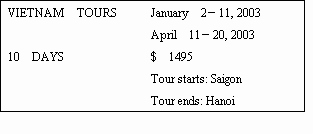题目内容
almost everything that lots of people from all over the country came to learn from him. The great man
taught his students whole-heartdely and answered their questions with great patience(耐心). One day a
student asked him, "My dear teacher, didn't you say you yourself have many,many more questions about
things than we do? But I think we students have far more than you. "
With a smile on his face, the teacher drew two circles(圈), one as large as a big cake, the other smaller. Then he said, "Of course, I've learned much more. But it's wrong to think that a teacher has fewer
questions than his students. Now, look at these two circles. The inside of the bigger one is my knowledge of things, and the inside of the smaller one is yours. Out of the circles is what is still unknown to us. Since
mine is larger, I have to use the longer line to draw the bigger circle. That means I have more opportunities(机会) to face what is still unknown. And that's why I have more questions than you do. The more you
learn, the more questions you have. You will never learn enough, you know. "
B. his knowledge had something to do with the circles
C. why he had more questions than the students
D. how he could get more knowledge
B. the teacher had so many questions than the teacher
C. the students had fewer questions than the teacher
D. the students had more questions than the teacher
B. knowledge
C. patience
D. questions
B. it's never too old to learn
C. every one of us should try to be a learned man
D. a teacher should have many questions

| |||||||||||||||||||||||||||||||||||||||||||||||||||||||||||||||||||||||||

 visit the serene and beautiful mausoleums of the old kings of Vietnam.
visit the serene and beautiful mausoleums of the old kings of Vietnam.